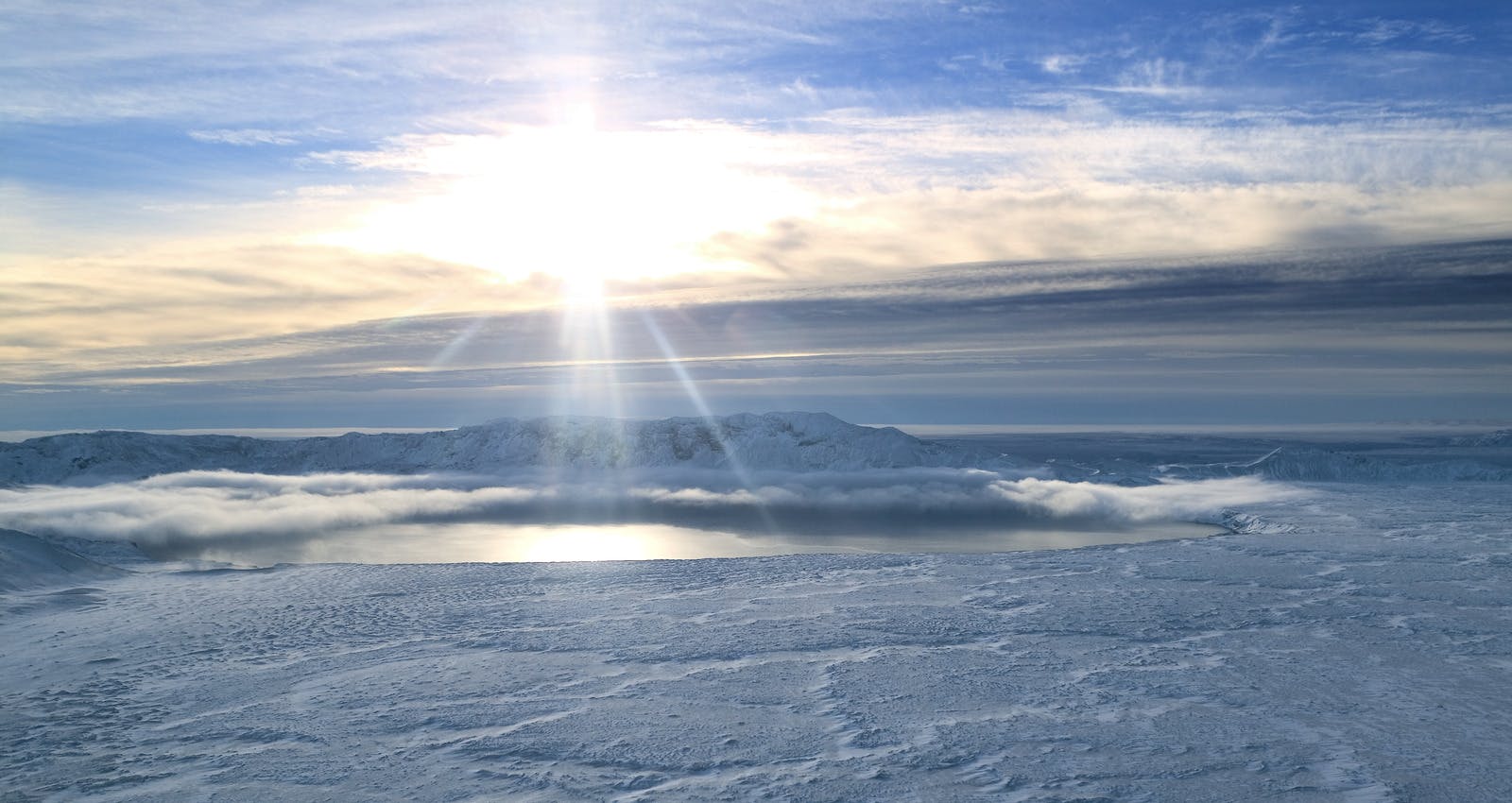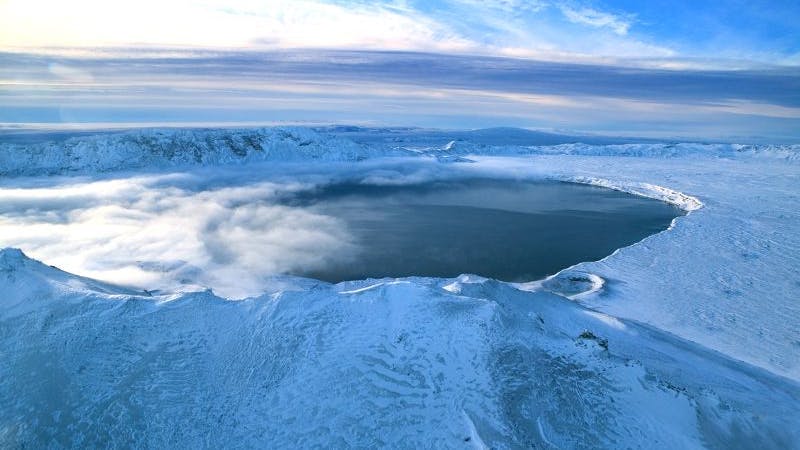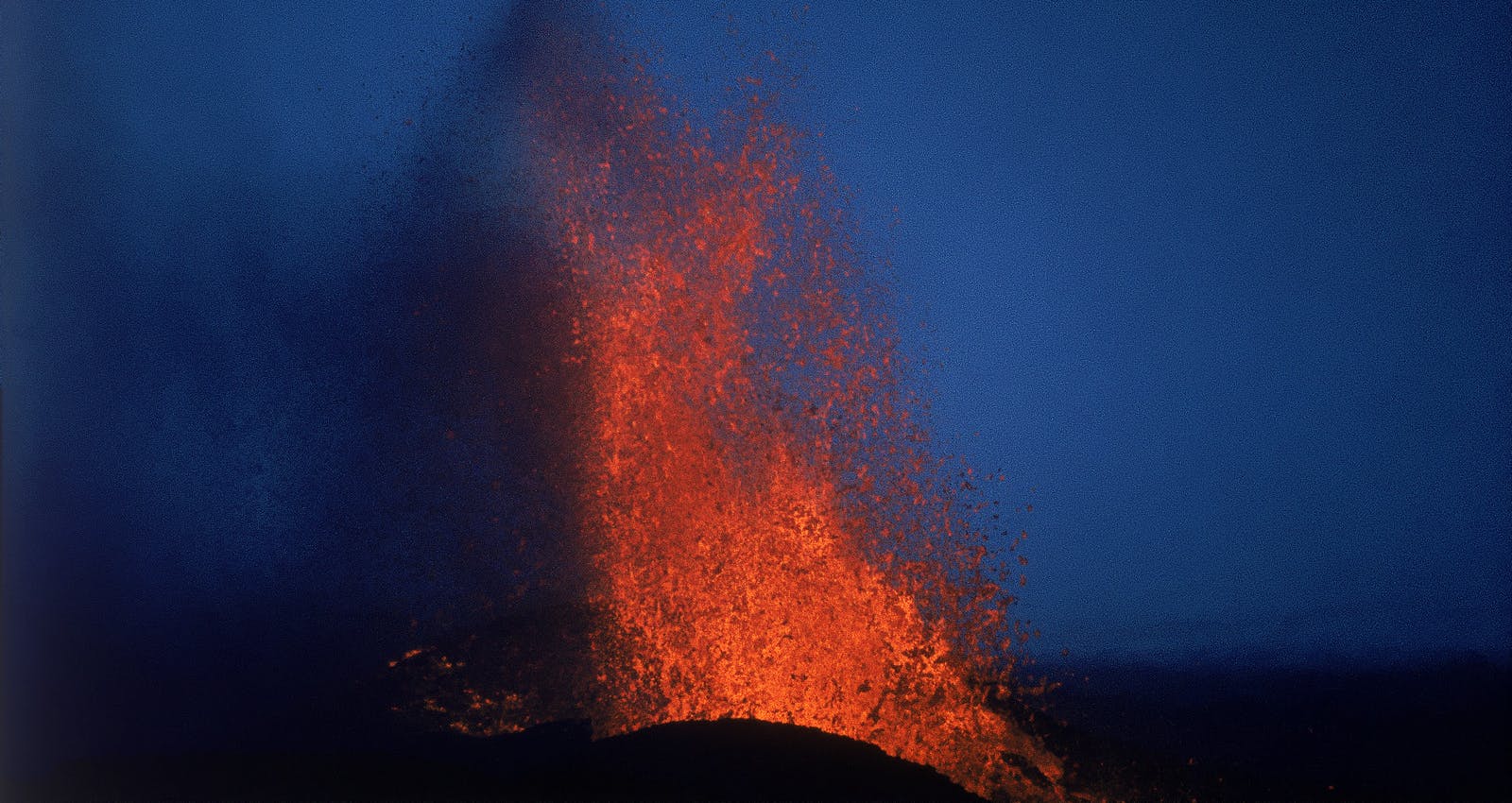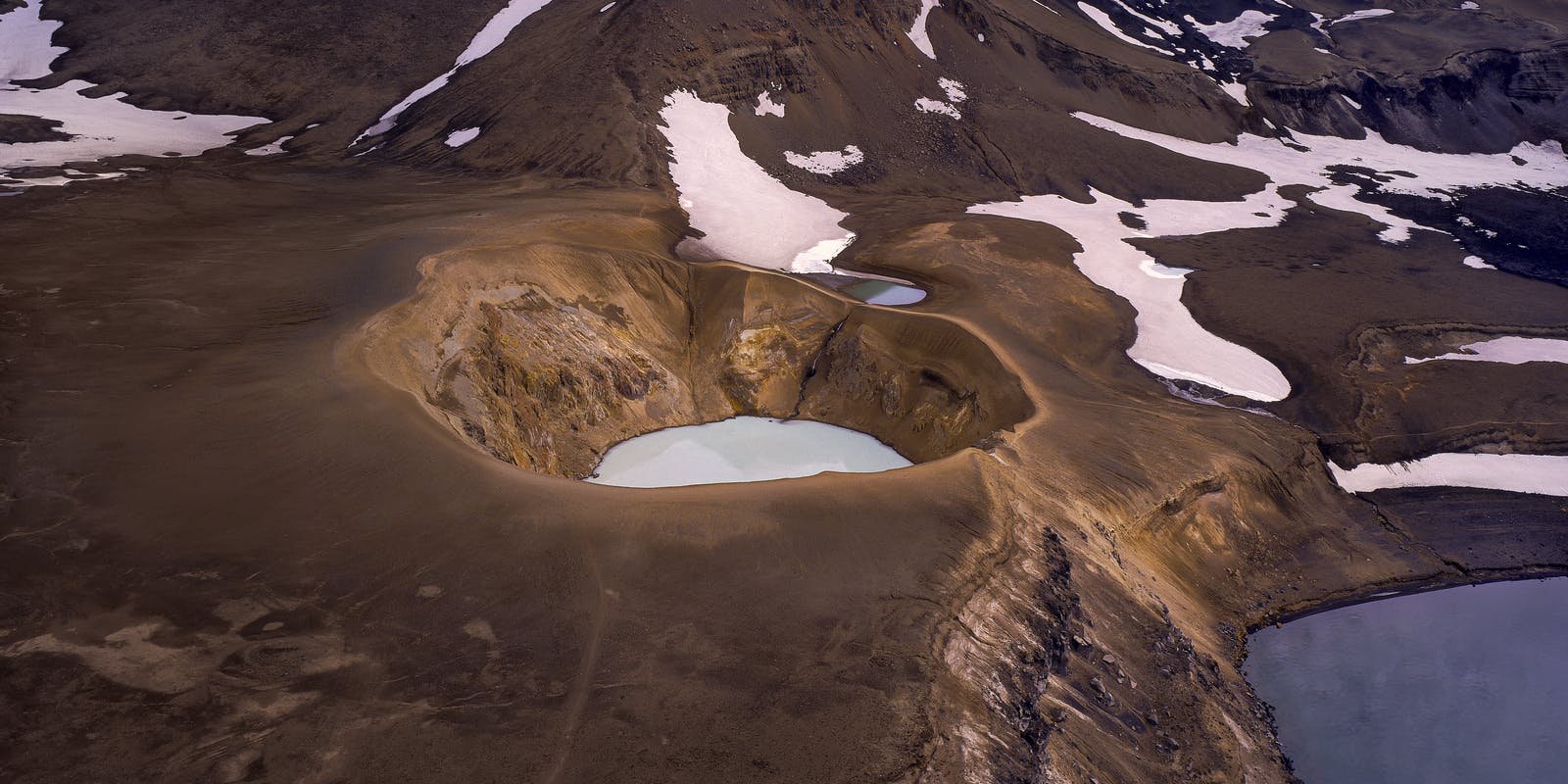
Eruptions of Askja Volcano
Askja is a central volcano with multiple calderas in the remote Dyngjufjöll Mountains. Large volcanic calderas are formed by collapsing land after volcanic eruptions. At 1,519 metres, Askja emerges from the Ódáðahraun lava field, and the terrain is quite mountainous and rocky. Askja has an explosive eruption history. But, there are no indications of an imminent eruption.
When Has Askja Erupted Throughout History?

Askja's last eruption was in 1961, and before that it had several small eruptions between 1920 and 1930. In 1875, the volcano had a devasting explosive eruption with dire consequences for Iceland. The ashfall was heavy enough to damage the land and kill livestock, and ash from the eruption drifted to Sweden, Norway, Germany and Poland.
Askja 1875 Eruption
The eruption began on March 29, 1875. This was a Plinian eruption characterized by explosive phreatomagmatic activity and gigantic volcanic plume. The eruption produced a large amount of tephra (volcanic ash and fragments).
The ash from the eruption was dispersed widely, covering large parts of eastern and northern Iceland. The ash layer was so thick in some places that it caused darkness during daylight hours. This ashfall had detrimental effects on agriculture, leading to the death of livestock and crop failures.
The immediate aftermath of the eruption saw a shortage of food due to the widespread destruction of crops and pasture lands. This, combined with the challenging living conditions in Iceland at the time, led to a significant emigration wave.
Many Icelanders chose to leave their homeland in search of better opportunities, with a notable number relocating to North America, particularly to Canada. This emigration wave is one of the most significant in Iceland's history.
The eruption also had a more global impact. The ash cloud reached mainland Europe, and the atmospheric effects were noted in various locations.
Askja 1961 Eruption

The eruption began on July 10, 1961, and lasted for about a month, ending in early August.
The 1961 eruption was primarily effusive, meaning it was characterized by the outpouring of lava rather than explosive bursts of ash and tephra. The eruption produced basaltic lava, which flowed from the vents and spread across the surrounding area.
The lava flows from the 1961 eruption, Vikrahraun, covered an area of about 15 square kilometres. While this eruption was relatively small and did not produce significant ashfall or tephra, it still added a new layer to the complex geology of the Askja region.
Askja remains an active volcano, albeit without signs of an impending eruption. Nonetheless, geologists are vigilantly observing the volcano, noting it has been over 60 years since its last eruption, and there has been recent seismic activity. Stay updated on Askja volcano's awakening here.
Where is Askja Located?
Askja is located in the Icelandic highlands, the interior of Iceland. It takes excellent planning and an F-Road-approved vehicle to access the area. If you plan to hike in the highlands, ensure you have the appropriate clothing, sturdy footwear, food and water, and a charged mobile phone. Always check the weather and road conditions before heading out on any hike.
Where Can You Learn About Volcanoes in Iceland?

Perlan's Forces of Nature exhibition allows guests to feel the power of volcanoes, earthquakes, and geothermal energy that powers the island. Guests will learn that volcanoes form when heat and pressure build beneath the earth's surface. The earth's weak points tend to be along fault lines where tectonic plates converge or diverge, as in Iceland's case.
Perlan's exhibition shows that volcanic activity in Iceland is so diverse that researchers typically speak of "volcanic systems" rather than individual volcanoes. The island has 30 active volcanic systems, each with many types of volcanoes.
FAQ

What type of eruption does Askja produce?
The last eruption in Askja, in October 1961, was effusive, as most of the eruptions occurred at this volcano. Twenty days before, a significant increase in geothermal activity was observed, and increased seismicity was reported in the area. New solfataras were observed in the area which had not been active before.
What would happen if Askja erupted?
The result of an Askja eruption would depend on its type and size. There would likely be earthquakes and sulfurous smells before the eruption, and authorities would issue warnings. Tours to the region would be cancelled, and roads to the area would be closed if warranted. Geologists constantly monitor the volcanoes on the island, and procedures are in place to keep people safe during a volcanic eruption. There is no need to feel unsafe during a trip to Iceland.
Is Askja safe to visit?
Please note that the volcano is only accessible for a few months of the year due to snow and weather. The roads around Askja are unpaved and rugged F roads. Therefore, you must have a 4WD vehicle with a high undercarriage. It is recommended to first stop at Drekagil's park ranger station to find out the latest travel conditions at the Viti crater.
Popular articles

Reykjanes Volcanoes Overview
Enjoy a complete overview of the Reykjanes Volcanoes from 2021-2024. Learn about its geology, recent activity, and visitor tips for a safe, memorable experience.

Reykjanes Peninsula Volcanoes: Sundhnúksgígar Eruptions
The anticipated volcano has erupted in the Reykjanes Peninsula, the site is being called Sundhnúkagígar. See the historic insights on the seismic activity and volcanic eruptions.

Earthquakes in Iceland
Earthquakes in Iceland are a fact of life. Each year, hundreds of small tremors shake the earth, a reminder of the country’s position on a tectonic plate boundary.

Volcano Museums and Exhibitions in Iceland
If you don't manage to visit an actively erupting volcano in Iceland - Experience its force at one of these excellent volcano museums and exhibitions in Iceland.

Top 10 Places To See the Northern Lights in Iceland
You can see the northern lights across the country, but some spots are more suitable than others. Find the best place to see the northern lights in Iceland.

Ice Caves From Reykjavik
Travel beyond the capital for a closer look at an ice cave under one of Iceland’s glaciers. If you can’t spare the time, experience Perlan’s ice cave in Reykjavik.